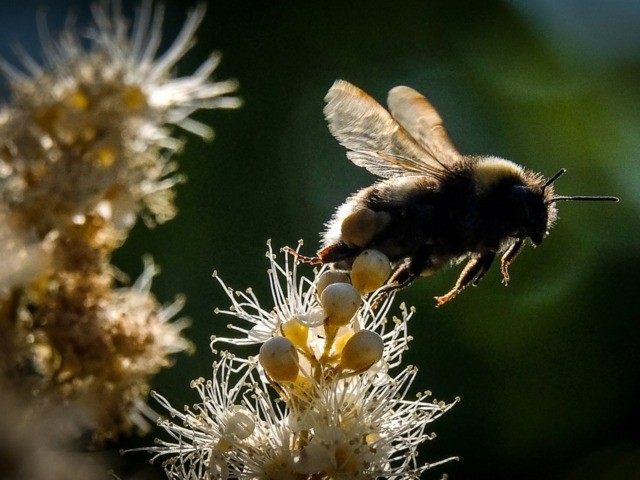Climate change is causing bumblebees to disappear “at an incredibly alarming rate” across Europe and North America, climate alarmists assert this week.
While bumblebee populations appeared stable for a long time, their numbers began to drop precipitously in the year 2000 and have continued falling up to the present, with a total drop of some 30 percent compared to 1974 figures, one article suggested Saturday.
In recent years, climate change has been blamed for diverse phenomena ranging from a slump in coffee production to devastating hurricanes to a drop in the population of Hawaiian monk seals to the decline of migratory songbirds and even colder winters.
Anthropogenic climate change — the idea that human emissions of carbon dioxide into the atmosphere are significantly driving global temperatures upwards — has become the scapegoat for problems ranging from the mass deaths of reindeer to the creation of “ghost forests” along the U.S. Atlantic seaboard.
In 2018, Stevie Wonder suggested that climate change had caused the cancer that killed legendary soul singer Aretha Franklin in August, while claiming that climate change skeptics share the responsibility for her death.
Former U.S. President Barack Obama famously proposed that climate change was partially to blame for the rise of Islamic terror group Boko Haram in Nigeria as well as Syria’s civil war.
Last year, an article in Forbes also blamed climate change for workers’ “cognitive decline” and increased suicide rates.
Now bumblebees have been added to the growing list of the victims of climate change.
According to the lead researcher in a new essay in Science magazine, Peter Soroye of the University of Ottawa in Canada, losses in the bumblebee population are definitely the work of climate change “chaos.”
“We’ve linked this to climate change — and more specifically to the extreme temperatures and the climate chaos that climate change is producing,” he said.
Dr. Tim Newbold of University College London (UCL) concurs, citing previous research suggesting that bumblebee distributions are moving northwards in Europe and North America, “as you’d expect with climate change.”
“But this was the first time that we have been able to really tie local extinctions and colonisations of bumble bees to climate change, showing a really clear fingerprint of climate change in the declines that we’ve seen,” Newbold added.
The writers believe that increasing frequency of hotter temperatures “predicts species’ local extinction risk, chances of colonizing a new area, and changing species richness,” which leads them to assert that human carbon dioxide emissions are killing bees.
“As average temperatures continue to rise, bumble bees may be faced with an untenable increase in frequency of extreme temperatures,” they predict.

COMMENTS
Please let us know if you're having issues with commenting.